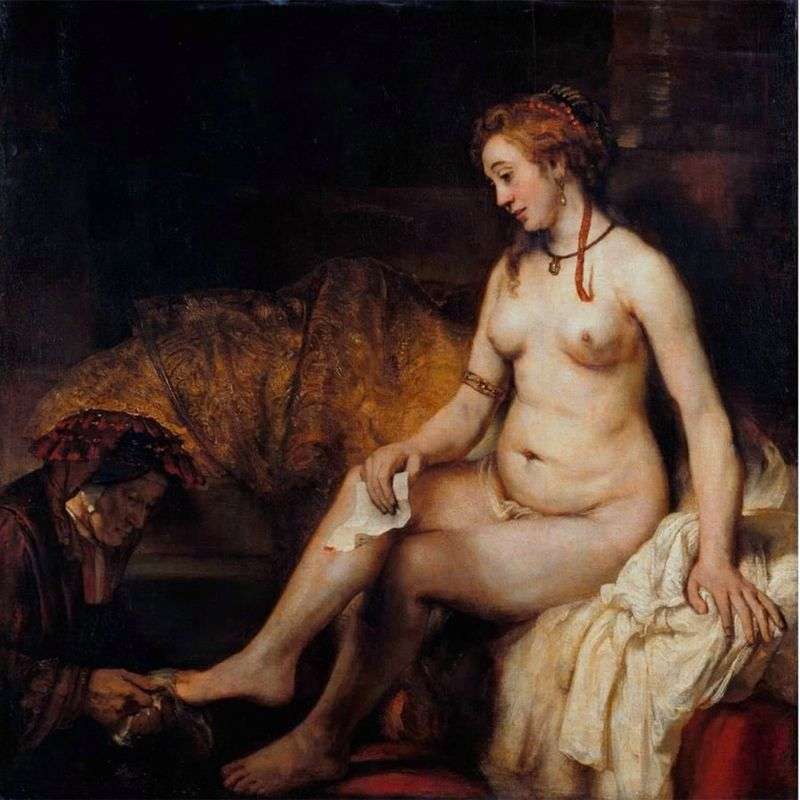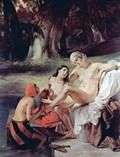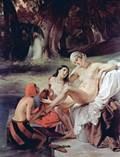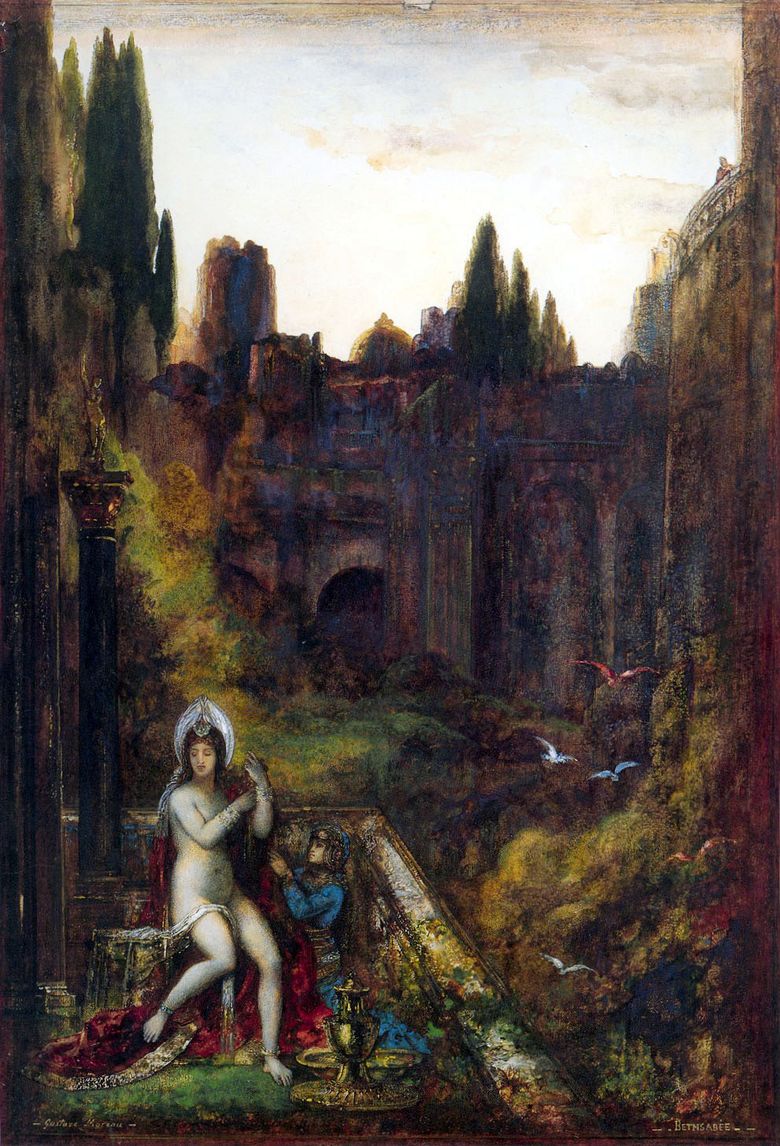
According to the Bible, Bathsheba was a woman of rare beauty. King David, walking on the roof of his palace, saw Beersheba bathing downstairs. Her husband, Uriah the Hittite, was at that time away from home, serving in the army of David. Bathsheba did not try to seduce the king, as evidenced by the biblical text. But David was tempted by the beauty of Bathsheba and ordered her taken to the palace. As a result of their relationship, she became pregnant.
Later, David wrote a letter to the commander of the Uriah army, in which he ordered to put Uriah where there would be “the strongest battle, and step back from him so that he would be struck and die.” Indeed, that is what happened, and David subsequently married Bathsheba. Their first child lived only a few days. David later repented of his deed.
This story served as the plot for many famous paintings. With all her high position, the most beloved of the wives of David, Bathsheba took a place in the shadow and behaved in a dignified manner. Her influence on David was apparently great, so she prompted him to declare her eldest son Solomon king. Then she mainly contributed to the destruction of the assassination of Adonii on the occupation of the throne of his father. In relation to David, she became a faithful and loving wife and a good mother to her children.
In art, Bathsheba is usually depicted nude. Earlier Renaissance artists show her dressed and just washing hands or feet. Sometimes she is portrayed with a letter, although the Bible does not indicate this detail. The 50th psalm was written by David when he repented of having killed the pious husband Uriah the Hittite and captured his wife, Bathsheba.
 Bathsheba (Bathsheba), swimming by Francesco Hayes
Bathsheba (Bathsheba), swimming by Francesco Hayes Bathsheba in the bath by Sebastiano Ricci
Bathsheba in the bath by Sebastiano Ricci The Appearance of Christ by Francambicio
The Appearance of Christ by Francambicio Bathsheba by Rembrandt Harmens Van Rhine
Bathsheba by Rembrandt Harmens Van Rhine Bathsheba (Bathsheba), baño – Francesco Haze
Bathsheba (Bathsheba), baño – Francesco Haze Bathsheba (Bathsheba), natation – Francesco Hayes
Bathsheba (Bathsheba), natation – Francesco Hayes Bathsheba – Gustave Moreau
Bathsheba – Gustave Moreau Bethsabée – Gustave Moreau
Bethsabée – Gustave Moreau